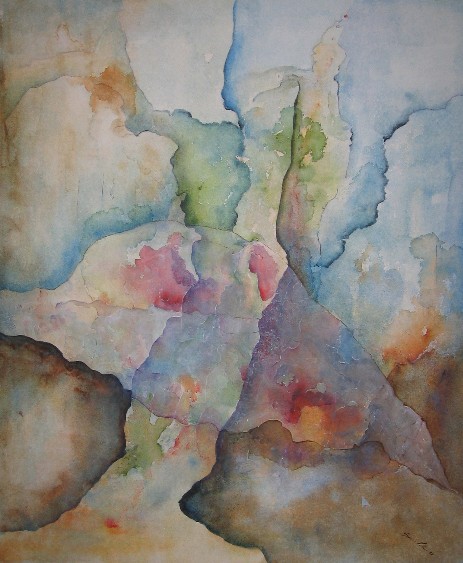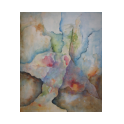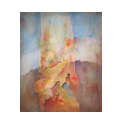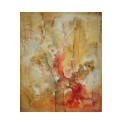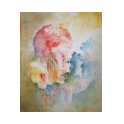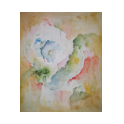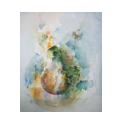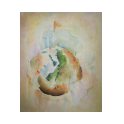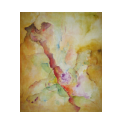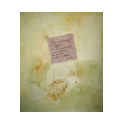Nel Sogno perduto di una foglia - Into The Lost Dream of a Leaf - Sara Villa Artworks
Menu principale:
Nel Sogno perduto di una foglia - Into The Lost Dream of a Leaf
Progetti-Projects
Progetto per la mostra/Project for the exhibition
NEL SOGNO PERDUTO DI UNA FOGLIA - INTO THE LOST DREAM OF A LEAF
Sara Villa
Testo di/Text by Eugenio Carmi
Galleria L'Osanna, Nardò, Lecce, Italy, 2009
An Ancient Oxymoron in the Mystery of Our Times
by Eugenio Carmi
Introduction
I am privileged to enjoy the friendship of Riccardo Leuzzi, a true gentleman of southern Italy, or, to be more precise, of the fascinating area of Apulia famous for its Baroque architecture. He is extremely fond of contemporary art and, besides being an excellent lawyer, he has a gallery in Nardò, just a few kilometres from Lecce — the Galleria L’Osanna. I first met him in 2006, when he invited me to hold an exhibition in Nardò and, because I took a liking to him at once, I accepted very willingly. Meanwhile our mutual respect and friendship continued to grow, so that two years later, in 2008, he asked me to hold another exhibition. Of course I accepted, not only for the opportunity to show my works, but also for the pleasure of returning to Apulia, with its amiable people, its ancient olive trees and its Baroque architecture. I went to the opening with my friend Popi Fedeli, who always accompanies me to my exhibitions, and my assistant Sara, who had never visited southern Italy before. With the proverbial hospitality of the south, we were given a warm welcome at the Leuzzi home, where, surrounded by splendid works of art, we were offered local delicacies prepared by Emanuela, Riccardo’s charming wife. It was on that occasion that Riccardo, who was eager to make his gallery available also to young artists, suggested that Sara might wish to hold an exhibition there. And, over a glass or two of wine, he asked me if I could write an introduction for the catalogue. I was somewhat perplexed about this, given that my work involves producing art and not criticizing it, but I took up the challenge.
I am privileged to enjoy the friendship of Riccardo Leuzzi, a true gentleman of southern Italy, or, to be more precise, of the fascinating area of Apulia famous for its Baroque architecture. He is extremely fond of contemporary art and, besides being an excellent lawyer, he has a gallery in Nardò, just a few kilometres from Lecce — the Galleria L’Osanna. I first met him in 2006, when he invited me to hold an exhibition in Nardò and, because I took a liking to him at once, I accepted very willingly. Meanwhile our mutual respect and friendship continued to grow, so that two years later, in 2008, he asked me to hold another exhibition. Of course I accepted, not only for the opportunity to show my works, but also for the pleasure of returning to Apulia, with its amiable people, its ancient olive trees and its Baroque architecture. I went to the opening with my friend Popi Fedeli, who always accompanies me to my exhibitions, and my assistant Sara, who had never visited southern Italy before. With the proverbial hospitality of the south, we were given a warm welcome at the Leuzzi home, where, surrounded by splendid works of art, we were offered local delicacies prepared by Emanuela, Riccardo’s charming wife. It was on that occasion that Riccardo, who was eager to make his gallery available also to young artists, suggested that Sara might wish to hold an exhibition there. And, over a glass or two of wine, he asked me if I could write an introduction for the catalogue. I was somewhat perplexed about this, given that my work involves producing art and not criticizing it, but I took up the challenge.
Some Years Ago April 1999.
FAI, the Fondo Italiano per l’Ambiente (the Italian equivalent of the National Trust), asked me to be a member of the jury for a competition entitled ‘Vesti un monumento’ (Dress a Monument), which was open to students of the art academies. I particularly appreciated the work of two girls, one of whom was Sara Villa, a student at the Accademia di Belle Arti di Brera, in Milan, who presented a fascinating project for the Villa Rosales in Buscate, the village she came from, close to Milan. She was awarded a prize and, some time later, I decided I would like to know her personally.
Some Years Later: 2006
In consideration of the particular sensibility of her work, I asked Sara if she would like to be an assistant in my studio. I remember she accepted immediately and, if my memory serves me right, with conviction. Thus began her involvement with my studio, with increasingly positive results, which I will explain below when discussing her and her work. In fact, I discovered that, when she wasn’t working in my studio, she used her free time at home to engage in her own artistic activity.
Sara As a Person
Sara is an oxymoron. In her there’s a rational aspect, allowing her to be a perfect studio assistant, tidying up the mess that inevitably exists in every artist’s studio and, above all, carrying out with the greatest of ease all those complex operations on the computer that I’m not able to do. Having said that — and here’s the oxymoron — there’s another aspect that she keeps hidden and that I only discovered after some time, when I knew her better, and which is undoubtedly the most important part of her. I call her an "ancient girl", because she is an independently-minded person who doesn’t bow to facile fashions, she dresses in her own style, she doesn't show off, she’s shy and demure and she isn’t very talkative. In general, people of few words can be divided into two categories: either they don’t have anything to say and are uninteresting, or they’re reserved and introvert. Sara belongs to the latter category, which is certainly both more difficult and more interesting to discover — something I have tried to do.
Her Work
As I mentioned above, Sara is reserved and taciturn, but she is very busy expressing her poetic and spiritual side through her artwork. Riccardo Leuzzi’s unexpected invitation to hold an exhibition in his Nardò gallery has been an important incentive for her to focus on the only form of expression that reveals her true nature and identity, conveying from her mind to her hands what words cannot communicate. In order to write these lines, I asked her to take me to see some of the works on which she was working. I must again stress that, since I am not a critic by profession, I shall limit myself to perceiving with the passion of an image-maker and, with a touch of magic, what appears to me in her paintings. I told her — and I’ll repeat it to you who are looking at her pictures — that it is they that reveal her innermost poetic feelings, which she will never manifest in any other way. Here I must confess to my obsession with recognizing the specific identity of each individual, and even more so in the case of artists. Today, in 2009, in a consumerist world in the throes of a spiritual crisis, I believe that the art of too many young people has come under the sway of the methods of deceitful advertising, devoid of its own identity and incapable of conveying emotions. Sara, however, belongs to the minority that continues to believe in using one’s hands and in the message with which the mind still makes use of the age-old manual tradition through which the work of art is created. Moreover, this exhibition offers a very special feature, because a collage with a poem is visible in four paintings. The poem, which she has written, is a powerful presence in the work and, paradoxically, seems to draw attention to its abstract character. I am fascinated and even surprised by what immediately appears to me as the cross-fertilization between the chaste, very light pictorial image and the poetry placed on top of it, with an unconscious anxiety that doesn’t want to reveal what is hidden below it. This is Sara’s nature: it’s her identity. She’ll never tell you anything herself.
PS. This is the second time I’ve written the introduction to an exhibition catalogue. The first time was many years ago. I wrote a text for Anselmo Carrea, who lived close to Gavi Ligure, in southern Piedmont, and whose parents ran a small, old-fashioned shop selling foodstuffs and a host of other goods. Living in a world of his own, he painted delicate little abstract pictures. I was very fond of him.
Milano, January 2009
From the Catalogue of the exhibition "Sara Villa. Nel sogno perduto di una foglia", 2009, Galleria L'Osanna, Nardò (Lecce) Italy
Un antico ossimoro nel mistero del nostro tempo
di Eugenio Carmi
Premessa.
L’amicizia con Riccardo Leuzzi è quella che si ha la fortuna di avere con un vero signore dell’Italia del Sud, e in questo caso dell’affascinante Puglia barocca. E’ un grande appassionato dell’arte contemporanea e, oltre ad essere un bravo avvocato, ha una galleria a Nardò, a pochi chilometri da Lecce, la galleria L’Osanna. Lo conobbi nel 2006 quando mi invitò a fare una mostra a Nardò, cosa che, nata da una simpatia a prima vista, accettai con gioia. Nel frattempo diventarono sempre più salde la reciproca stima e anche la nostra amicizia, così che due anni dopo, nel 2008, mi invitò a tenere una seconda mostra. Naturalmente accettai, non soltanto per esporre, ma per il piacere di ritornare in Puglia, con la sua gente, con i suoi ulivi secolari, con il suo barocco. Andai per l’inaugurazione insieme all’amico Popi Fedeli che sempre mi accompagna alle mie mostre, e insieme alla mia assistente Sara che ancora non conosceva il Sud. Con la proverbiale e innata ospitalità del Sud una festa ci accolse in casa Leuzzi, con cibi tipici preparati dalle abilissime mani di Emanuela, la simpatica moglie di Riccardo, circondati da splendide opere d’arte alle pareti. Fu in quell’occasione che Riccardo, desideroso di dedicare il suo spazio anche ai giovani, offrì a Sara una eventuale mostra nella sua galleria. E, fra un bicchiere e l’altro, domandò a me di presentarla in catalogo. Risposi con un po’ di preoccupazione, visto che il mio lavoro è quello di fare e non di criticare, ma accettai la sfida.
L’amicizia con Riccardo Leuzzi è quella che si ha la fortuna di avere con un vero signore dell’Italia del Sud, e in questo caso dell’affascinante Puglia barocca. E’ un grande appassionato dell’arte contemporanea e, oltre ad essere un bravo avvocato, ha una galleria a Nardò, a pochi chilometri da Lecce, la galleria L’Osanna. Lo conobbi nel 2006 quando mi invitò a fare una mostra a Nardò, cosa che, nata da una simpatia a prima vista, accettai con gioia. Nel frattempo diventarono sempre più salde la reciproca stima e anche la nostra amicizia, così che due anni dopo, nel 2008, mi invitò a tenere una seconda mostra. Naturalmente accettai, non soltanto per esporre, ma per il piacere di ritornare in Puglia, con la sua gente, con i suoi ulivi secolari, con il suo barocco. Andai per l’inaugurazione insieme all’amico Popi Fedeli che sempre mi accompagna alle mie mostre, e insieme alla mia assistente Sara che ancora non conosceva il Sud. Con la proverbiale e innata ospitalità del Sud una festa ci accolse in casa Leuzzi, con cibi tipici preparati dalle abilissime mani di Emanuela, la simpatica moglie di Riccardo, circondati da splendide opere d’arte alle pareti. Fu in quell’occasione che Riccardo, desideroso di dedicare il suo spazio anche ai giovani, offrì a Sara una eventuale mostra nella sua galleria. E, fra un bicchiere e l’altro, domandò a me di presentarla in catalogo. Risposi con un po’ di preoccupazione, visto che il mio lavoro è quello di fare e non di criticare, ma accettai la sfida.
Qualche anno fa. Aprile 1999.
Il F.A.I., il Fondo Italiano per l’Ambiente, mi invita a far parte della giuria per il concorso “Vesti un monumento” al quale erano invitati studenti e studentesse delle Accademie di Belle Arti. Io avevo apprezzato particolarmente i lavori di due ragazze, e una di queste era Sara Villa, studentessa all’Accademia di Brera, che aveva presentato un progetto molto affascinante per la Villa Rosales a Buscate, il suo paese natale vicino a Milano. Fu premiata e dopo qualche tempo desiderai conoscerla personalmente.
Qualche anno dopo. 2006.
Considerando la poesia del suo lavoro le chiesi di entrare nel mio studio come assistente. Ricordo che accettò subito e mi sembra, se la memoria non mi tradisce, con molta convinzione. Iniziò così una collaborazione mano a mano sempre più positiva. Cosa che spiegherò qui di seguito parlando di lei e del suo lavoro. Infatti scoprii che, oltre alla collaborazione nel mio studio, usava il suo tempo libero a casa per portare avanti le sue personali ricerche pittoriche.
La persona.
Sara è un ossimoro. In lei c’è un aspetto razionale che le consente di essere una perfetta assistente nella vita dello studio, dando ordine alla inevitabile confusione che esiste in ogni studio d’artista, e soprattutto compiendo con estrema facilità quelle complesse operazioni al computer che io non so fare. Detto questo, ed ecco l’ossimoro, c’è un altro aspetto che lei tiene nascosto e che io ho scoperto dopo un certo tempo conoscendola meglio, e che è senz’altro la sua parte più importante. Io la chiamo una "ragazza antica", che non segue le facili mode, è personale nel vestire, non ama esibirsi, è timida e pudica, e parla molto poco. In genere le persone sempre silenziose si dividono in due categorie: o non hanno niente da dire e sono poco interessanti, o sono chiuse e introverse. Sara appartiene alla seconda categoria, che indubbiamente è più difficile e più interessante da scoprire. Cosa che ho tentato di fare.
Il suo lavoro.
Come ebbi occasione di accennare più sopra, Sara ha un temperamento riservato e poco incline alla comunicazione verbale, ma è molto impegnata ad esprimere il suo lato poetico e spirituale attraverso l’immagine. L’invito inaspettato di Riccardo Leuzzi ad esporre nella sua galleria di Nardò è stato un importante stimolo a concentrarsi sulla sola forma di espressione che racconta la sua natura e la sua identità, trasmettendo dalla mente alle mani ciò che la parola non tradisce. Per poter scrivere queste righe le ho domandato di portarmi a vedere alcune opere alle quali sta lavorando. Ripeto e sottolineo che, non essendo un critico di professione, mi limito a percepire con la passione di un fabbricante di immagini e con un po’ di magia ciò che mi appare nelle sue tele. L’ho detto a lei e lo dico a voi che guarderete le sue immagini, che è proprio in esse che si rivelano i suoi contenuti poetici interiori, quelli che lei non mostrerà mai in altro modo. Confesso la mia ossessione per riconoscere in ogni individuo la sua identità, e nell’artista più che mai. Oggi, nel 2009, in un mondo consumistico in piena crisi spirituale, mi sembra che l’arte di troppi giovani sia sedotta dai meccanismi di una pubblicità menzognera, priva di identità e incapace di trasmettere emozione. Sara appartiene invece a quella minoranza che ancora continua a credere nella fatica delle mani, nel messaggio con il quale la mente ancora si serve della secolare tradizione manuale attraverso la quale l’opera prende vita. Questa mostra ha inoltre un aspetto molto particolare, perché in quattro dipinti è visibile un collage con una sua poesia. La poesia, scritta da lei, entra con forza nell’opera e, quasi come un paradosso, ne accentua l’astrazione. Sono affascinato, e anche sorpreso, da quella che mi appare subito come una fecondazione fra la pudica, leggerissima, immagine pittorica e i versi appoggiati su di essa, con un’ansia inconscia che non vuole mostrare cosa è nascosto sotto. Questa è la natura di Sara, è la sua identità. A parole non vi dirà mai nulla.
Postscriptum. E’ la seconda volta che presento una mostra. La prima volta è stata tanti anni fa. Avevo scritto per Anselmo Carrea, che abitava in una frazione di Gavi Ligure, i cui genitori gestivano una piccola bottega di un tempo, con prodotti alimentari e un po’ di tutto. Lui, abitando fuori dal mondo, dipingeva piccoli quadri pieni di poesia, astratti, delicati. Mi piaceva molto.
Milano, gennaio 2009
Dal catalogo della mostra "Sara Villa. Nel sogno perduto di una foglia", 2009, Galleria L'Osanna, Nardò (Lecce).
